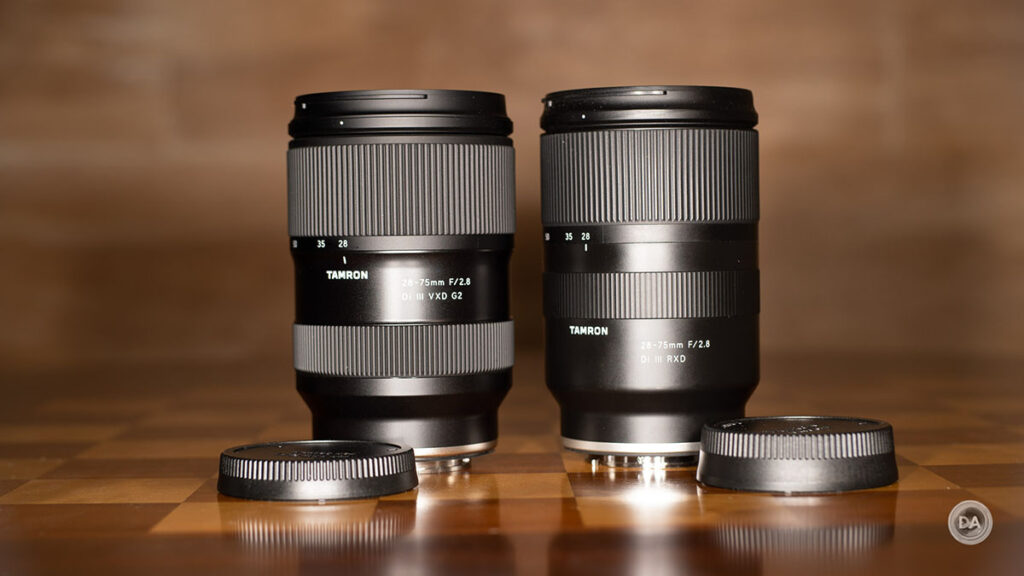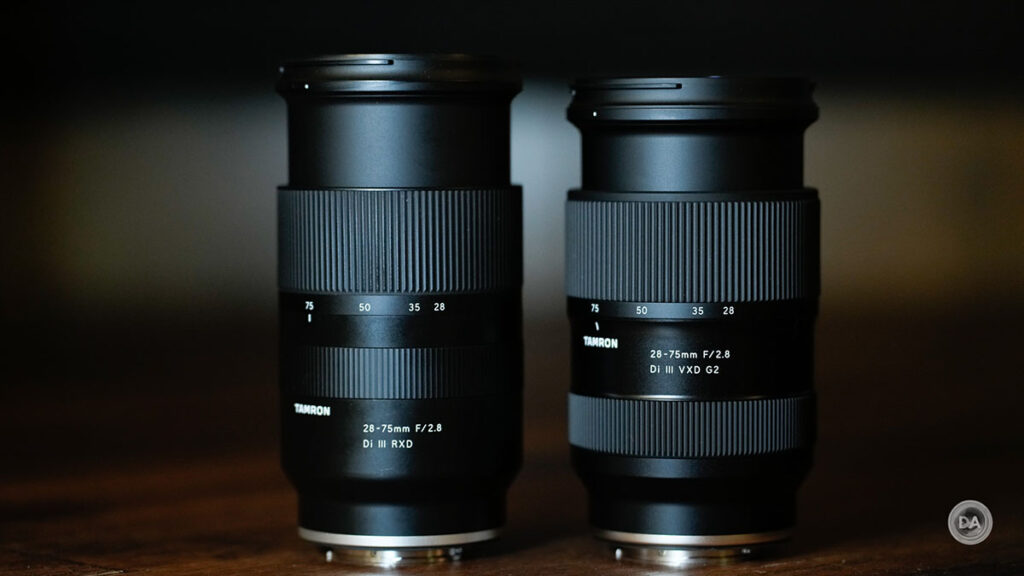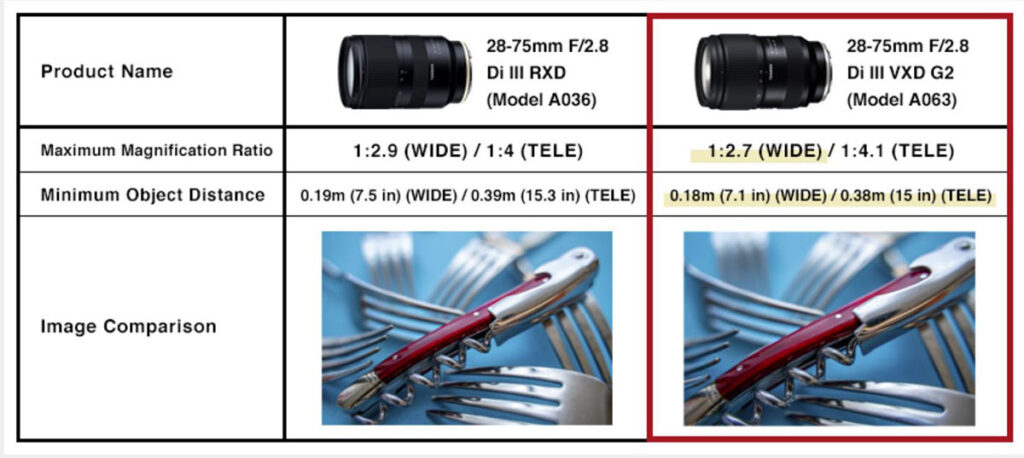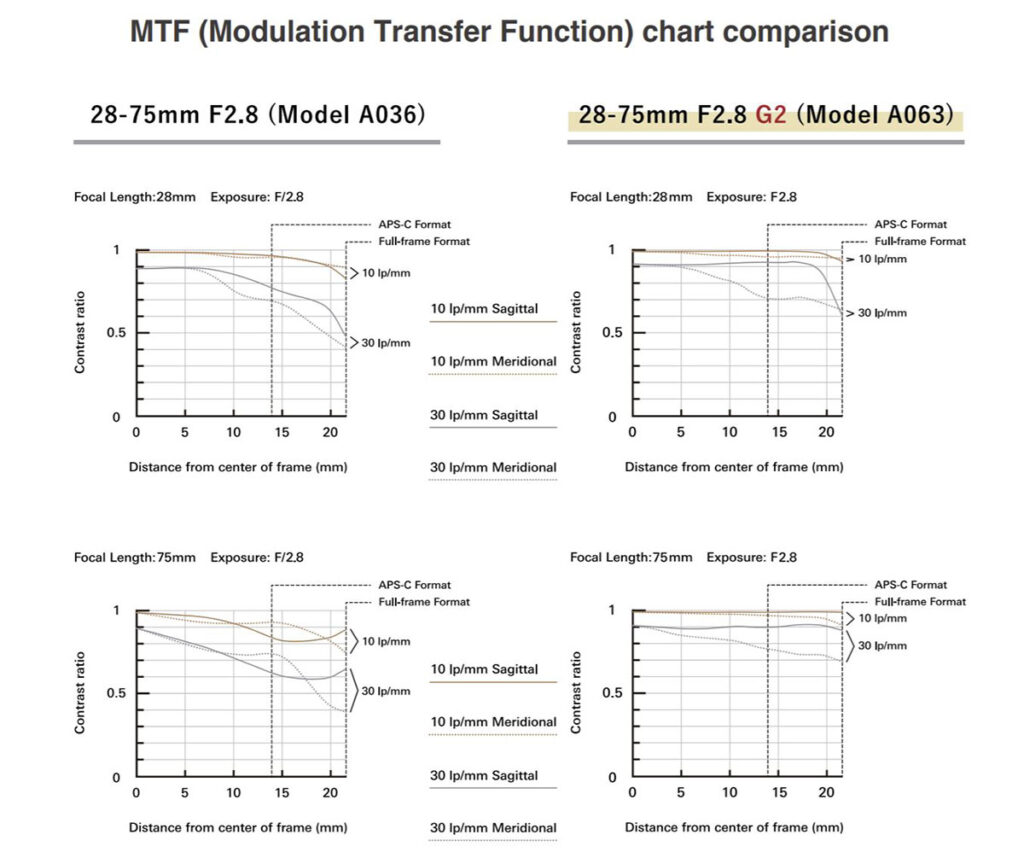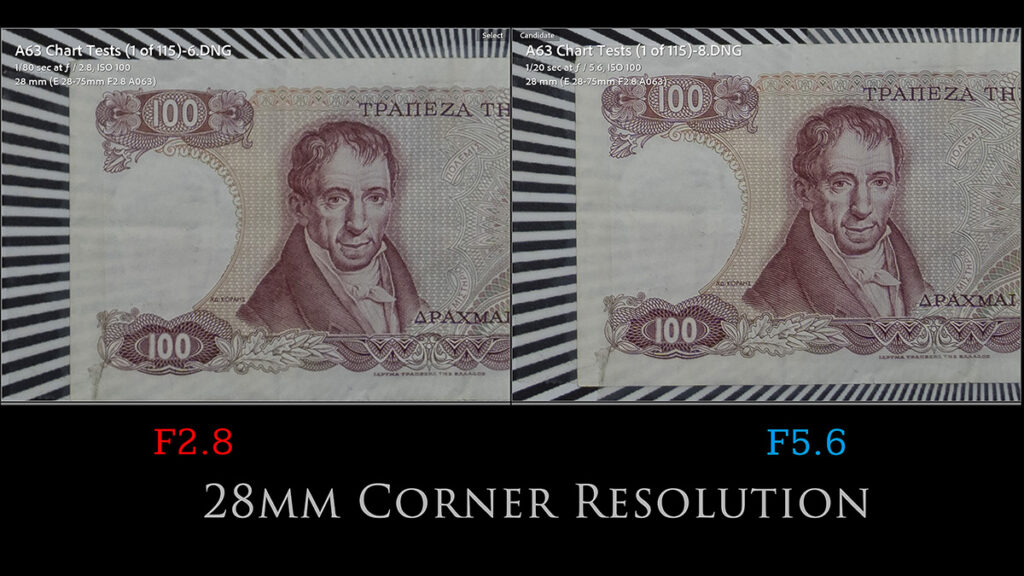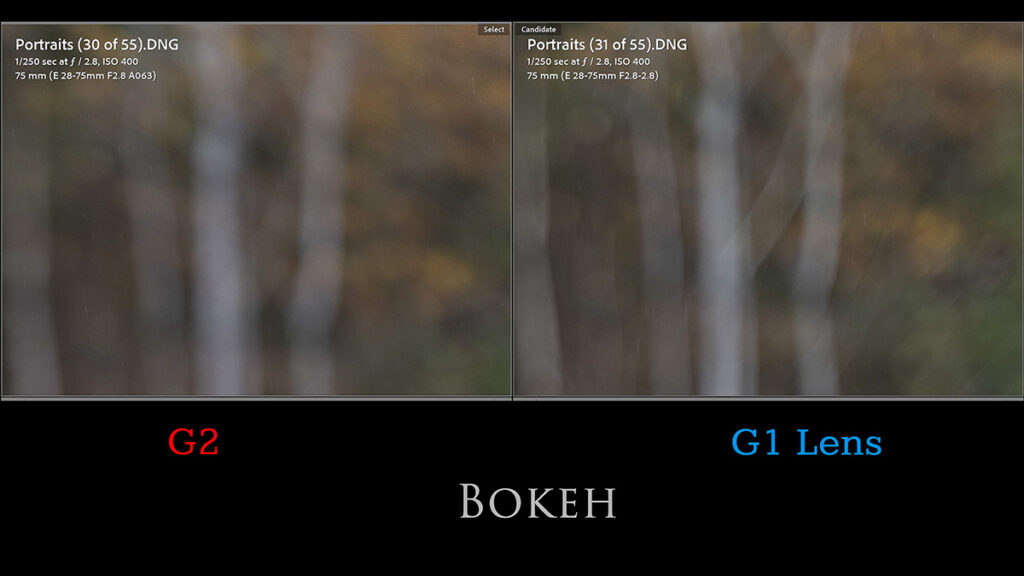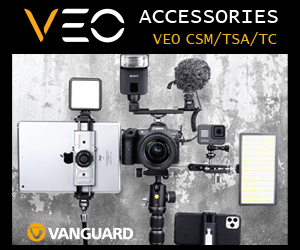Tamron 28-75mm F/2.8 Di III VXD G2 (A063) Review
Tamron’s first full frame lens for Sony mirrorless, the Tamron 28-75mm F2.8 RXD was an unqualified success. I lauded it in my review, as, although the lens was fairly plain in terms of build and features, it had excellent autofocus, very good optics, and a very reasonable price…not to mention a very reasonable size. The only real competitor back in June of 2018 was the very large and very expensive Sony FE 24-70mm F2.8 G Master, and, when I directly compared the two lenses, I found some give and take in their performance. The Tamron was very, very close in many ways, and that made it a huge critical and commercial success. It enjoyed a period for well over a year where it was the best selling lens in the world! That’s a huge success on every level. I’ve owned and used a copy of that lens (known internally as the A036), and it has held up very well and performed great for me over that time. But in late 2021 Tamron has decided to up their game even higher with the Tamron 28-75mm F2.8 Di III VXD G2, internally known as the A063, which we’ll refer to it as for brevity in this review. I got very excited when I looked up and down the announcement from Tamron, as they improved the lens in basically every way while essentially not changing the price. That makes for an unqualified success, and the new A063 along with the Tamron 35-150mm F2-2.8 Di III VXD, are some of the finest lenses Tamron has ever made. The A063 is going to be one of the nicest standard zooms ever…and at a price point of only $1249 CDN, it is a tremendous bargain relative to the performance.
Let’s give you a little help with what all of those letter mean in the name in case you don’t speak “Tamron”. Di III is the designation that Tamron uses for mirrorless mounts (in this case Sony FE). G2 refers to this being a “Second Generation” lens, much like other companies refer to a MK II. VXD refers to the focus motor employed here (Voice-coil eXtreme-torque Drive), which is currently Tamron’s most premium autofocus system, and, in this case, Tamron claims that the focus speed is twice as fast as that on the A036 and its RXD focus motor. It is definitely essentially instantaneous in a wide variety of focus conditions.
Tamron has improved the build, the features, the optics, and the autofocus, all while not charging us any more to do this. They’ve even increased the magnification and shaved off a bit of weight. In essence, they’ve taken a winning formula that we loved because of its blend of performance and price in the A036 (and because of these things were willing to look over the shortcomings) and have polished and improved the formula into a truly awesome end result.
Prepare for this to be a little more glowing a review than usual, because Tamron has given us so much more while charging us very little more (MSRP has only gone up $50 CDN).
This lens is a winner, and in this review I’ll explore why that is along with providing a number of comparisons to the original lens. You can check out my thoughts as to whether or not the A063 should be on your radar in this review or check out my YouTube channel for my video reviews.
A063 Build, Handling, and Features
The A063 essentially looks and feels like an upscale version of the previous generation lens. This chart shows the minor tweaks made to the dimensions of the new A063.
The new A063 has a slightly different profile than the A036, with a more sculpted look to it along with a new finish that is both shinier and more resistant to fingerprints and scratching. It also gives at least the feel of being less plasticky in build. The new lens is a bit wider (75.8 vs 73mm) but is a fraction shorter and 10g lighter. You might also note from the first photo that Tamron has redesigned the rear lens cap to be to more low profile and a better fit for the Sony aesthetic (the older caps were similar to their DSLR mount designs).
As noted in Tamron’s little diagram of the differences between the two lenses, the redesigned rings are night and day better than the old ones. The manual focus ring, in particular, has a much better feel (thicker, more rubberized surface) and also much better damping in the actual focus action. I did manual focus for some of my tests, and there was a noticeable difference in the quality of focus using the new lens.
Likewise the feel and action of the zoom ring is also improved. The zoom ring is located near the front of the lens, and the zoom ring feels much better in the hand and the zoom action feels more precise. It’s worth noting that the new A063 extends about a 7mm less when zoomed to 75mm, which surprised me a bit.
Tamron has continued to improve its weather sealing in recent lenses, and that trend continues with the 28-75 G2. We’ve got a slightly thicker rear gasket, a few additional inner seals (up to about 8), and there is a fluorine coating on the front element.
One of those weather sealed bits is a new feature in the form of USB-C port that works in harmony with the new focus hold button. The USB-C port allows you to directly connect the lens to your computer and utilize a new free piece of software from Tamron called “Tamron Lens Utility” (click here to visit Tamron’s page for the software). This allows you to easily and directly load firmware updates, but, more importantly, you can program a variety of different functions to the focus hold/set button. One I like is the ability to use it like an AF/MF switch or to control the behavior of the focus ring (you can switch between it functioning like an aperture ring and focus ring).
Some other nice tweaks include the ability to change the direction of the focus ring and whether you want it to function in a linear or nonlinear fashion. This will help for video, as does the ability to tweak the behavior of focus pulls (you can change speed or even program a preset focus pull). All of this really adds to the functionality of the lens.
Also improved is the MFD distance at both ends of the zoom range. You can get one centimeter closer on either the wide (18cm) or telephoto (38cm) ends, which improves the magnification on the wide end to 1:2.7, or 0.37x. The telephoto end (oddly) actually gets a fraction worse (0.24x vs 0.25x).
Here’s a series of comparisons that show 28mm magnification compared, then 75mm, then a pixel level comparison between the two at 75mm:
To my eye, I don’t see that the A063 has any lower magnification at 75mm. What I do see, however, is a huge improvement in clarity and contrast at MFD. It’s easy to get gorgeous close-up shots with the A063. Just look at the detail in the crop from this close up at 75mm:
Magnification is of course even higher when you shoot at 28mm, allowing for some very unique images.
We retain the 67mm front filter thread shared by so many of the Tamron lenses on Sony.
The aperture iris continues to have 9 rounded blades that work fine for retaining a circular shape through F5.6, after which you’ll see a bit of the blades.
The 28-75 G2 retains all the strengths of the first-generation lens (reasonably compact and light, inexpensive), while adding a host of new features and improvements. This is now a more premium lens in build and handling along with performance.
Tamron 28-75mm VXD G2 Focus and Video Performance
As noted in the intro, Tamron has given the A063 their premium focus system, the Voice-coil eXtreme-torque Drive (VXD), which is a high end linear focus motor. They claim that this gives you roughly twice as much focus speed as the RXD focus motor found on the first generation lens.
Now, to be fair, I never had any real disappointments in the first generation lens’ focus. There was a bit of a YouTube flap over some focus issue that I was never able to recreate, and I’ve used the lens near daily for over three years with excellent results for both stills and video. I’ve filmed over one hundred videos with it, and it has always delivered stable, effective results. As a byproduct, I can’t say that I noticed some kind of night and day difference between the two lenses, but I can say that autofocus is excellent in the A063. VXD introduces higher torque into the focus motor, which gives it even more speed and reliability. I got accurately focused results in a number of different environments, including very low light. This shot was taken at ISO 6400 and still only achieved a 1/50th shutter speed, and yet you can see that focus grabbed very accurately on Loki’s face:
I’ve used it some in a church environment (more like ISO 1600 range), and eye detect and general autofocus was impeccable.
Even when focusing extremely close (these mushrooms are tiny – maybe about the size of a quarter), I got accurately focused results.
Standard zooms will often be used as an event and portrait lens, and it certainly worked beautifully well when people were in the frame. I did a little portrait session with my youngest son, and eye detect just nailed focus again and again:
I didn’t have any misses during the portrait session despite shooting at a variety of distances and while introducing various foreground objects into the equation.
Autofocus also worked well even when I shot into very strongly backlit situations.
I did a video test where I moved towards at the camera, in and out, at various speeds, and the focus system did a good job of tracking my eye. I used the A063 to record a few of my video segments, and focus was solid and reliable. Likewise in my video focus pull tests, focus pulls were smooth and silent. I saw a roughly average amount of focus breathing; subjects change size to some degree but not in an exaggerated sense.
Real world focus results were excellent, and I have nothing negative to report on this front. Tamron’s VXD focus motor is excellent; it revivals the high end linear motors found in the Sony G-Master series, and focus reliability is just as good. The only focus limitation is a Sony restriction; third party lenses achieve only a limit of 15 FPS burst rate. That’s a non-issue with most Sony bodies, but slightly lower than the maximum on the a9 bodies (20 FPS possible) or the Alpha 1 (30 FPS possible). This is unlikely to be used seriously for sports, though, so it is probably not a real issue.
Tamron A063 Image Quality Breakdown
My eyes popped a bit when I saw the MTF charts for the A063. The first generation lens competed very well with the Sony 24-70mm F2.8 GM lens across their shared focal range in my real world tests, but the new optical formula of 17 elements in 15 groups on the G2 lens dramatically improves on the older lens, as seen in the comparison of MTF charts below. You can also see how well the MTF charts look in comparison to the Sigma 24-70mm F2.8 DN ART, which is probably the chief competitor to the A063.
The sharpness profile is unusually flat, with only a bit of drop-off in the extreme corner at 28mm, and almost no drop-off anywhere at 75mm, where the sharpness profile stays at almost 90% all across the frame. That’s impressive, and you can see the real world results reflect that stunningly good sharpness and contrast. Look at how much “pop” is in this image when viewed at 100% in the crop below.
So let’s dive into the technical side of things with a look at vignette and distortion at 28mm, F2.8:
One of the advantages of not going as wide as 24mm in a zoom is the ability to better control distortion on the wide end. I needed only a +6 to correct the barrel distortion; the Sigma 24-70 DN required a +21 under the same circumstance and delivered a much less clean correction. There is a moderate amount of vignette (+55 to correct). That’s about two stops in the corners, so fairly easy to correct for. Profile corrections in camera (JPEG or video) or in software (RAW files) will correct things painlessly.
At roughly 50mm the distortion flips to pincushion (-8 to correct) while the vignette diminishes (+41 to correct). The distortion and vignette are linear and clear up nicely.
Finally, at 75mm, distortion is about the same (-8) while vignette is slightly less (+37 to correct). I will point out that pincushion distortion is far preferable in a portrait oriented lens as it tends to make features slimmer.
No real issues here. Distortion and vignette are both fairly well controlled relative to other standard zooms. There’s nothing here that will cause any real damage to images.
I also give good marks for the control of chromatic aberrations. In most real world images I saw no fringing, though I saw a slight bit of green fringing in this image of a shiny old Pentax with bright lights shined on it.
I looked for lateral chromatic aberrations on my charts, and just didn’t see them. The edges have clean transitions from dark to light…and those blacks are inky dark!
I did spot some purple fringing on some bare branches at the top of this image, however (the most common scenario for me to actually see real world LaCA).
A quick correction with the chromatic aberration sampling tool took care of that, but there is obviously a few situations where you might see a bit of fringing. Nothing extreme, but they aren’t perfectly banished, either.
Overall these are good results in sum, however, and this points towards a promising optical performance in terms of sharpness and contrast. Here’s my test chart.
Crops and comparisons are shown at 200% and are from the 50 MP sensor of my Sony Alpha 1. Here’s a look at 28mm, F2.8, with crops from the center, mid-frame, and bottom right corner:
F2.8 results are essentially perfect across the frame. There is only the tiniest drop-off in the corners, and textures are crisp across the frame even at 200%. It is entirely possible to shoot real world landscapes at F2.8, as you can see that both the center and edge of the frame are nice and crisp.
A wide open portrait at F2.8 and 28mm looks extremely crisp at 100%:
There is only a little bit more to be gained when stopping down, mostly a bit more contrast that is mostly realized in the corners:
So how much better is this than the older lens? Well, about this much:
It’s not this extreme everywhere in the frame, but the excellent sharpness profile right into the corners is the main advantage here.
At 35mm the center is fabulous and the corners are good but not quite as good as at 35mm.
Corners sharpen up more as you stop down, so choose somewhere around F5.6 for peak landscape sharpness.
50mm results are roughly the same:
Real world portrait results at 50mm are fantastic even at F2.8:
At 75mm the crops across the frame look excellent once again.
If we compare back to the A036 we can see just how much better contrast is even in the center of the frame. Textures look cleaner and brighter.
It is the improved contrast in general that stands out to me in my tests. Look at how excellent the contrast is on these chain links at 75mm, F2.8:
More challenging is that bright bark in the sun, and yet textures look great (again at 75mm, F2.8):
This lens is impressively good, and, like the excellent 35-150mm F2-2.8 released at the same time from Tamron, I’m very impressed by the overall “pop” of images:
Another area of improvement is that I feel that skintones are more neutral. The A036 tended slightly towards warmer, slightly more yellow skintones, but you can see more refinement between the two in this comparison (along with at extra contrast around the eyes and lips).
Some real improvements, obviously.
I also think that bokeh is somewhat improved. There is less of tendency toward outlining of bokeh circles that showed up at 75mm on the old lens. I found the quality of the bokeh rendering to be quite good from the A063:
You can see that the bokeh is less “jittery” on the G2 vs the G1 lens. It’s smoother and more pleasing:
I found flare resistance to be good in general on the A063, and the sunburst effect looks quite nice at smaller apertures, too:
This shot was the most egregious example of flaring I could get, and it was a very challenging scene (extremely bright sun):
A bit of ghosting there, though contrast remained excellent.
Coma performance was fairly good, too, with just a bit of elongating of stars near the edges but little to no “wings” on them:
All told, that’s a lot of awesome in the optics department. The previous generation lens was very good for its price; the A063 is just good, period. Check out the image gallery here if you’d like to see even more photos than I can fit in the review.
Conclusion
The Tamron 28-75mm F2.8 Di III VXD G2 is essentially fan service. Consumers made the original A036 a huge commercial success, and Tamron has rewarded us by giving us a huge upgrade to this lens while essentially retaining the same price ($1249 CDN, but use code AMPLIS52018DA for 5% off). Basically everything is improved, from the build to the features to the autofocus to the optics. The A063 is now a professional grade lens in basically every detail. No, it doesn’t quite have the same set of features as the G Master lens, but now it isn’t far behind.
The fact that the lens doesn’t go to 24mm will still be a sticking point for some potential buyers, but if you think you can handle only going as wide as 28mm, there really isn’t a comparable lens out there. This is a far better lens than, say, the Sigma 28-70mm F2.8 DN, and the two lenses have the same retail price. There’s a “magic” to the rendering from the new lens that makes it just feel a lot more special.
The new lens feels great in the hands. It feels more upscale while managing to be even lighter, more substantial while actually being less so. That has a lot to do with the new physical sculpting, superior rings, and nicer finish. Add to this optics that have great saturation, sharpness, and contrast, and you have a true winner. Right now both the A036 and A063 are both available side by side for only $20 difference in price, but I suspect that Tamron will probably faze the A036 out, though they might move it down to a lower price point. That doesn’t seem to have been the trend in the past with Tamron lenses, though, so I suspect that in six months we’ll only see the G2 on the shelves. Now comes a hard question for the many, many people that bought the A036: sell it and upgrade, or just be content with what they have. The sheer excellence of the A063 is going to make the latter choice a very hard one to make…
Pros:
- Vastly improved build and handling
- New USB-C port and Focus Set button improvements are great
- Advanced weather sealing with 8 seal points
- Fluorine coating
- New finish and lens sculpting attractive
- Powerful VXD focus motor
- Quick and quiet autofocus
- Strong optical performance throughout zoom range
- Exceptional contrast and “pop” to images
- Excellent control of chromatic aberrations
- Very high levels of magnification
- Nice looking (improved) bokeh
- No real price increase over first gen lens
Cons:
- Some will find that 28mm isn’t wide enough
- A bit of fringing in difficult situations
About the Author
Dustin Abbott is a full time pastor/part time photographer from Pembroke, Ontario who shoots professionally but primarily for capturing beauty and sharing it with others. www.dustinabbott.net






